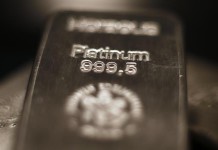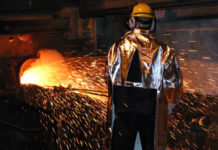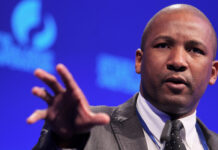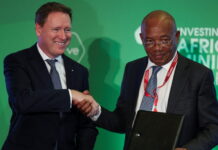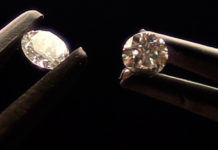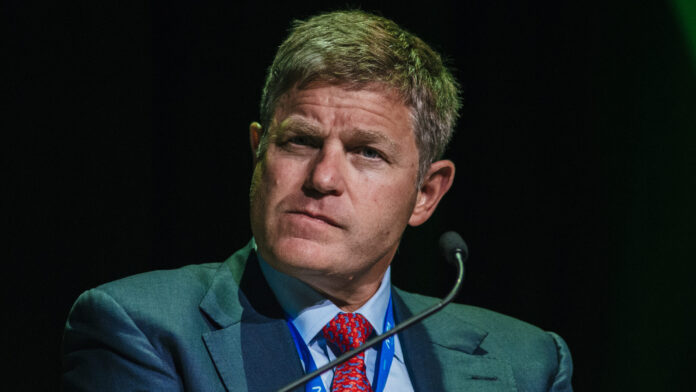
WHEN Gareth Penny ended his 22-year career at De Beers in 2010, the company was only just emerging from the tumult of the global financial crisis. Amid high indebtedness and poor market demand for diamond jewellery, De Beers had slashed production and reduced staff by a quarter.
There was even talk it should relist — speculation kiboshed by then chair Nicky Oppenheimer, whose family in 2001 had taken the business private in a deal with Anglo. The family had sold its De Beers shares to Anglo for $5.1bn, which lifted the UK miner’s stake to 85%.
As CEO of De Beers for five years, Penny had presided over a creditable recovery. Nonetheless, amid talk that De Beers was in need of sweeping modernisation, he had to go. The revamp of marketing, mining and the way it sold rough diamonds to selected buyers was a task to be carried out by one of two joint acting CEOs — Stuart Brown and Bruce Cleaver.
Fifteen years later, and with Cleaver having come and gone as CEO, De Beers again finds itself in troubled waters. The diamond market is at an ebb amid geopolitical and economic distress. In this climate of uncertainty investors prefer gold, and diamond consumers can now buy low-cost replicas grown in the lab.
Now, however, it is Anglo selling De Beers shares. And in an irony of ironies, it is Penny and Cleaver who are thought to be lining up rival consortiums, supported by Middle East investors, to buy the company — speculation, it must be stressed, that has not been confirmed by any party.
Anglo CEO Duncan Wanblad said at the group’s interim results presentation on July 31 that a shortlist of possible De Beers purchasers had been compiled.
“They are absolutely credible in terms of their understanding of the industry and their ability to be able to run and operate a business such as De Beers,” he told investors and media. “They are associated with and aligned to, and have experience of, the industry and market. That fills me with a huge amount of joy.”
He gave little else away, except to say diamond industry experience or affiliation had been Anglo’s prerequisite.
Pressed for details in an interview with Miningmx, Wanblad is reticent to address the speculation about Penny and Cleaver. But he repeats that “a deep association with the industry is really important” for De Beers.
“What we are absolutely going to rely on is people understanding the quality of the asset, despite where we find ourselves in the current market, and having a very clear view of a strategy for a world-class diamonds company and the preservation of value through the iconic brands,” says Wanblad.
“So it’s really nice that it’s not a process full of private equity and sort of fly-by-nights, as it were, but very credible buyers who have the capacity, ability and wherewithal, and an understanding of the industry and this business particularly.”
There is also interest from the Botswana government, whose mines comprise 60% of De Beers production, a contribution held in a 50/50 joint venture between Debswana and Anglo American. All in all, Botswana has a 15% stake in De Beers and a right of first refusal over Anglo’s stake.
The country’s mines minister, Bogolo Kenewendo, said last month that Botswana was interested in converting its stake into complete ownership of what she called a “strategic national asset”. President Duma Boko has similarly rattled Anglo’s cage by insisting the country will not be a passenger in the De Beers sales process.
However, analysts question the extent to which Botswana can control the process. Peel Hunt analyst Kieron Hodgson says Botswana’s acquisition of De Beers “seems far-fetched and improbable”, especially given the government’s fiscal constraints. Botswana’s foreign currency reserves have fallen to $3.5bn from $4.8bn a year earlier.
Wanblad, however, says Botswana is correct in taking a “commercial view”.
“He [Boko] has obviously got a different perspective from what many of us have, but he is being commercial in trying to get the best deal for Botswana. At the same time, he absolutely recognises it’s a competitive process.”
If Botswana is to take a larger stake in De Beers, as seems likely, it will not be through any free-carry or discounted stake.
It makes for a complex denouement of Anglo’s restructuring, in which De Beers is likely to be the final piece of the puzzle. “Of course, this is a very big business and will need multiple balance sheets to support the acquisition,” says Wanblad.
Market revival?
Another complicating factor is what investors may be prepared to pay. Anglo has a book value of $4bn for De Beers, having taken two writedowns in the past two years. Furthermore, it suffered an $189m earnings before interest, tax, depreciation and amortisation (ebitda) loss for the six months ended June, and a year-on-year $489m reversal in fortune.
A major factor in this was $500m in diamond inventories that Anglo realised at below cost so far this year. De Beers now has a stockpile worth $1.8bn, though not all of that is unsold rough diamonds. It’s a level that Anglo CFO John Heasley says is sustainable for De Beers, especially as the group expects an upturn in diamond demand.
This has been an especially bitter season for diamonds. Rough diamond prices have fallen about 5% in the past 12 months, according to Paul Zimnisky, an independent diamond analyst.
But Wanblad sees some promising signs.
First, demand for low-cost, lab-grown diamonds is ex-growth in a two-tier market. “People are starting to wonder why the hell they should be paying $3,000 or $4,000 for something that was just made in a machine at $100 a carat,” says Wanblad.
Retailers are wary of overselling lab-grown diamonds, and are warning buyers — relevant for those with an eye for investment — that a lab-grown diamond may not preserve its value. Wanblad calls it “a health warning”.
Second, China is slowly beginning to increase demand for diamonds after years of outflow of rough diamonds back into the manufacturing or cutting/polishing “midstream”. This comes as US and European demand remains robust. “Hopefully, I’m not grasping at straws,” says Wanblad.
In any event, Anglo’s plan is to press ahead vigorously with a trade sale of De Beers, and for good reason. Anglo’s net debt is high. It increased to $10.8bn in the six months ended June from $10.6bn a year ago, translating to a net debt:ebitda ratio of 1.8. Anglo wants to reduce that to one, on the basis it collects $3.8bn from the sale of its metallurgical coal assets in Australia and $500m from nickel sales, in addition to De Beers.
Balance sheet
It’s worth dipping into Anglo’s history again to realise why a trade sale of De Beers is the top choice for Wanblad over a possible IPO, a second route Anglo says it continues to develop. In early 2024, less than two years after taking over Anglo, Wanblad was forced to slash copper production guidance. Shares in the firm fell 25%. There was also widespread disapproval of plans to build a $4bn-$5bn mineral fertiliser project in the UK.
The realisation was that continuous squeezing of the copper margin was unsustainable. Better to address production of platinum and diamonds, whose markets were cyclically low and considered less able to compete for capital given the relatively dimmer long-term prospects.
Having said this, the Woodsmith mineral fertiliser project will be back on investor screens in 2027 once Anglo has syndicated the project, and the portfolio restructuring is well behind the group.
There is also near-term copper growth. Anglo has 1 million tons a year (from 700,000t) in its sights, though some of its expansion potential depends on a long-considered $7bn-$8bn fourth concentrator at Chile’s giant Collahuasi mine shared with Glencore and BHP.
In addition to clearing the decks for growth in copper and mineral fertiliser projects, a less-leveraged balance sheet opens up the prospect of “a refreshed capital returns framework”, says Goldman Sachs analyst Matt Greene. This includes the possibility of a share buyback.
While there is still major rewiring on Anglo to come — the group is running into potential problems selling its metallurgical coal mines in Australia — analysts feel it is heading in the right direction. “Anglo remains our top pick of the UK diversified miners,” says Myles Allsop, an analyst for UBS bank. “We expect the stock to rerate over the next 12 months as management rebuilds trust.”
A version of this article first appeared in the Financial Mail.


